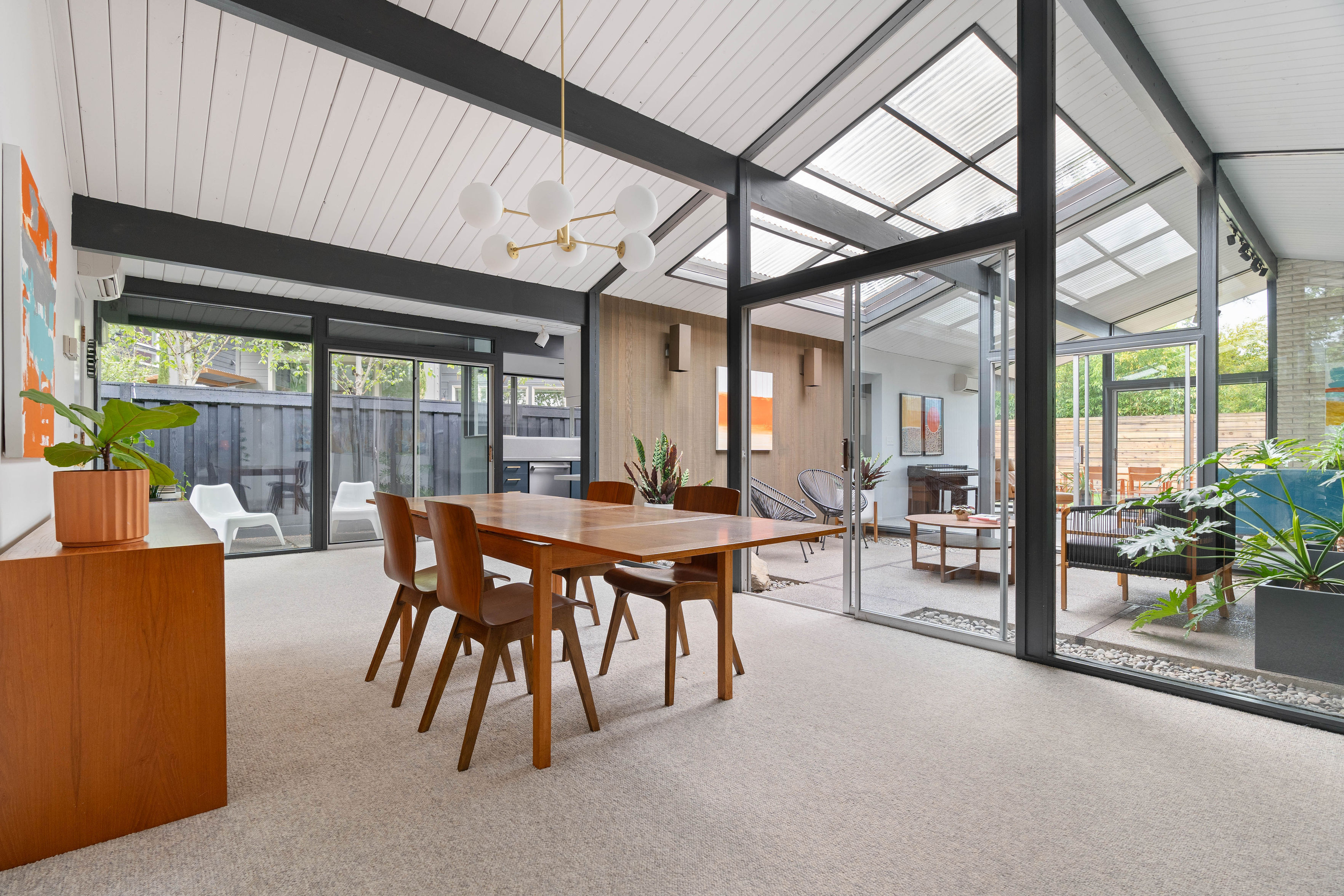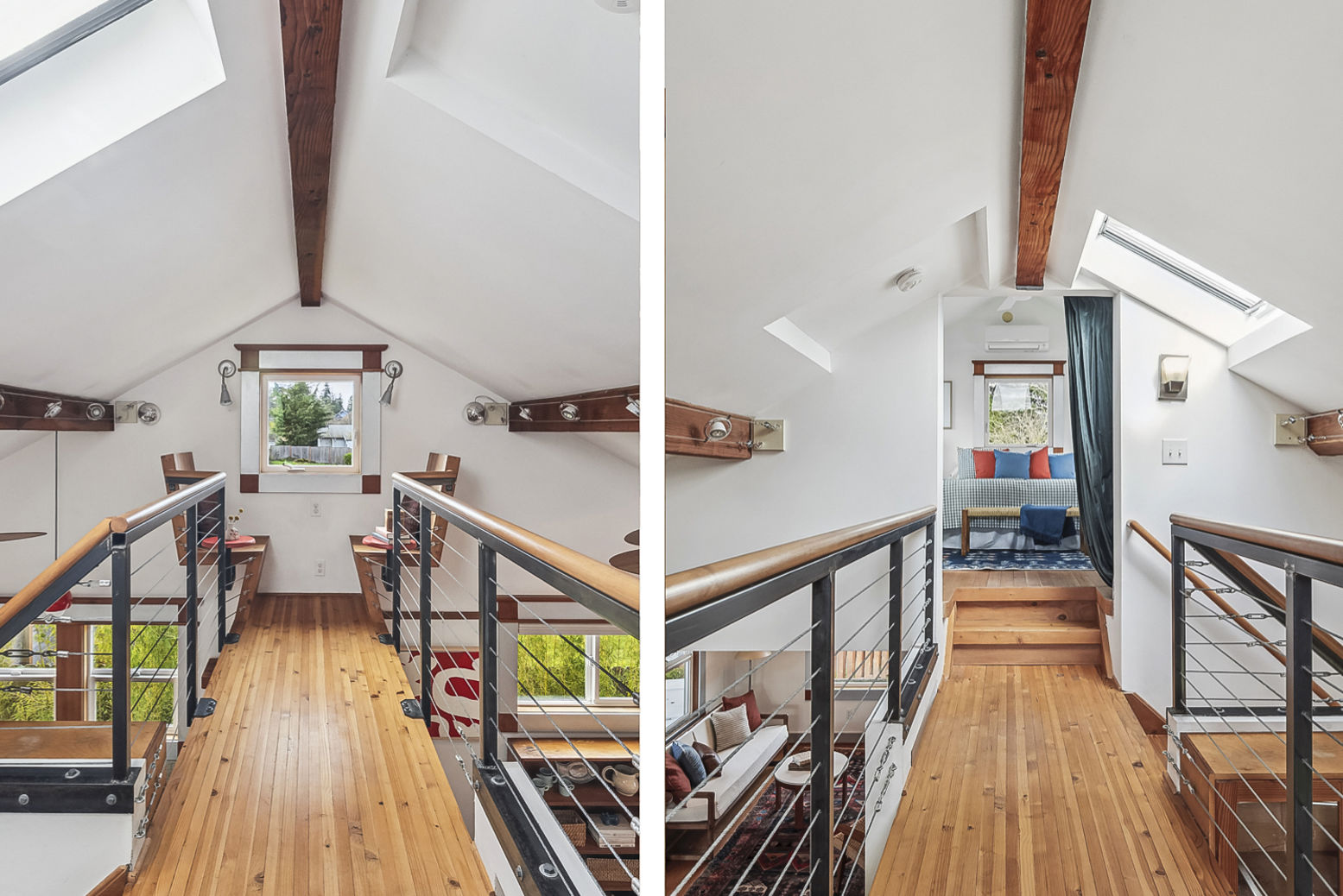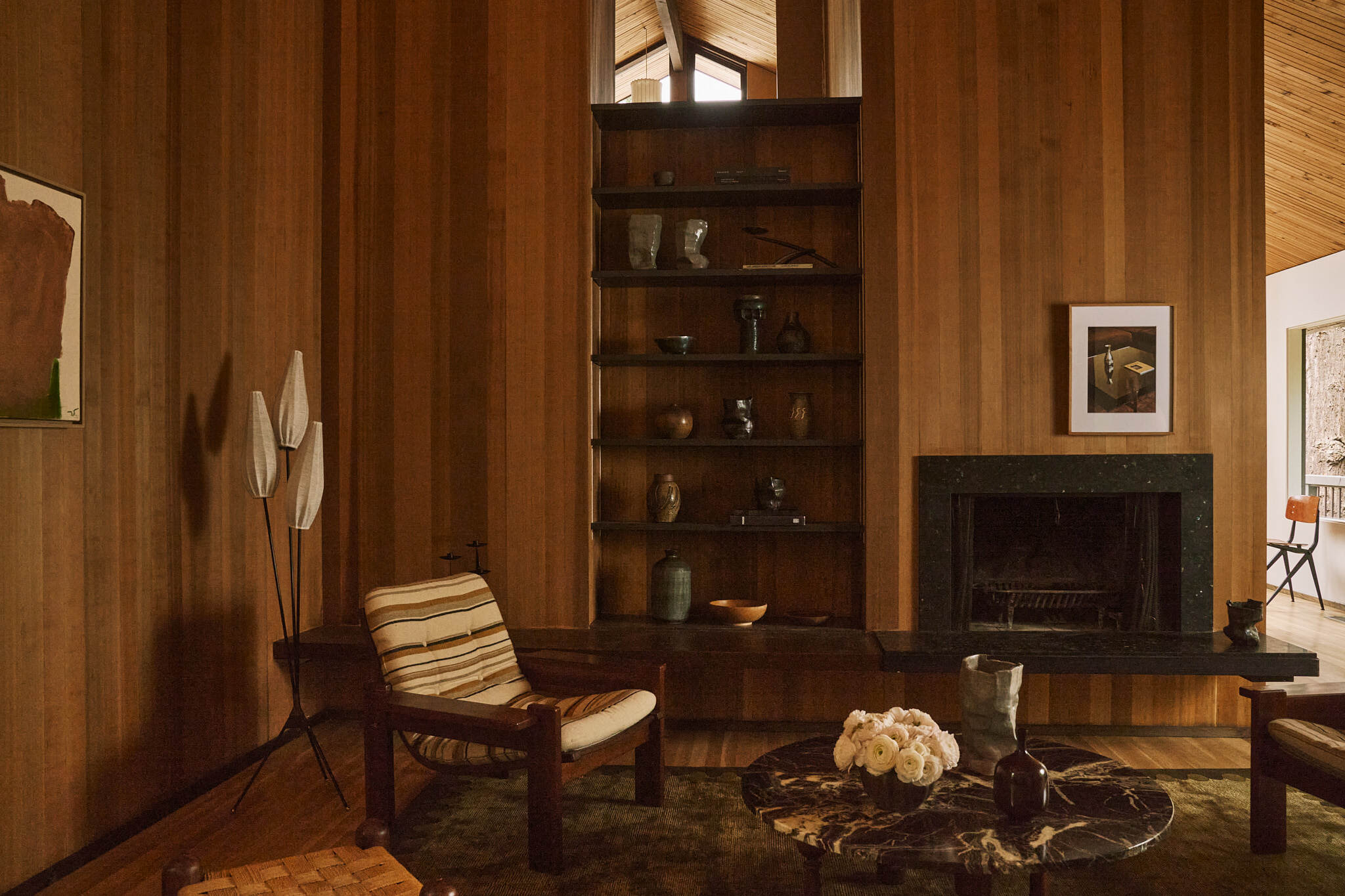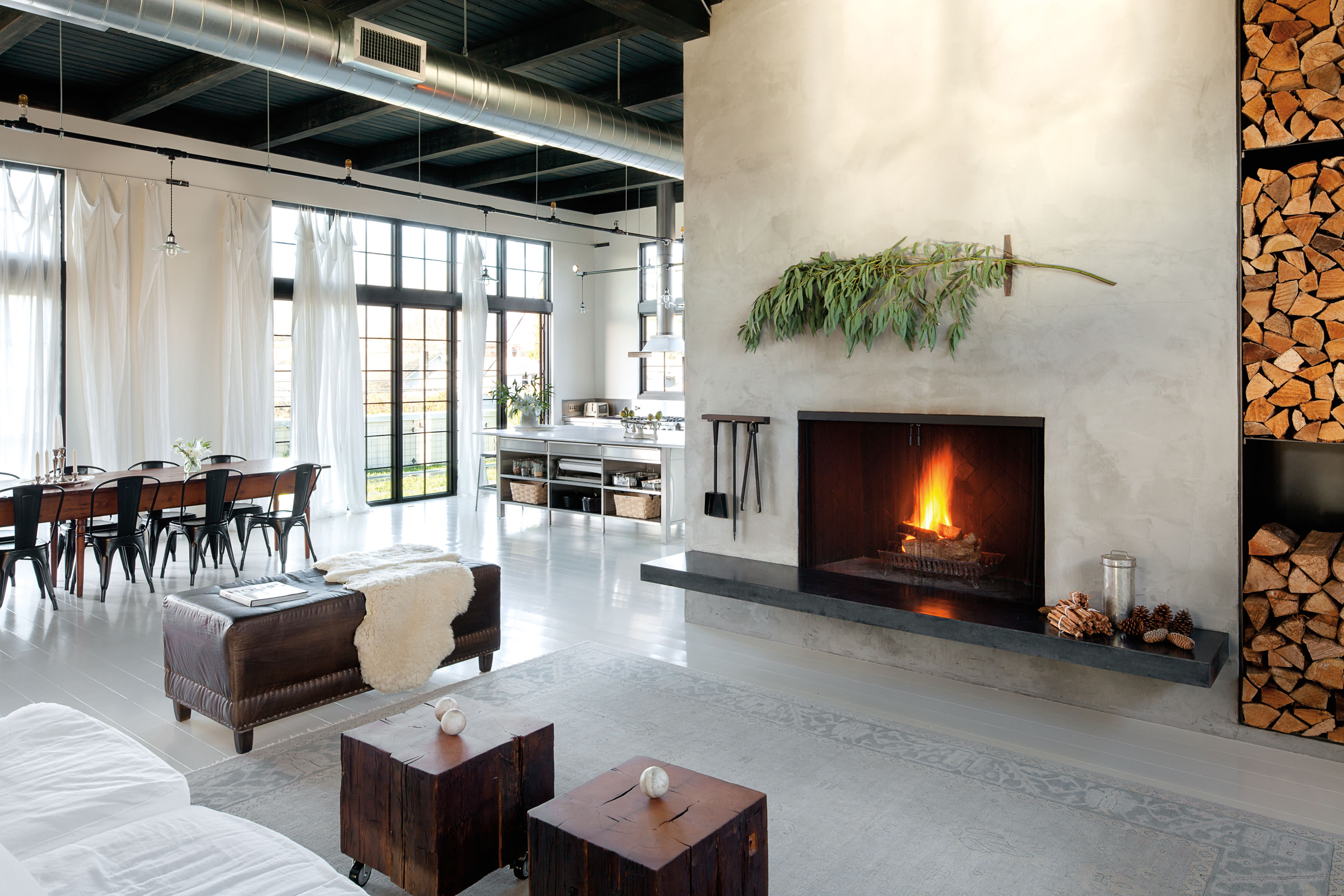
Portland Home Envy: Inside an Inspiring 1920s Industrial Warehouse Remodel
Inner Southeast Portland is a mélange of mixed-use styles: Modest 1930s brick houses nudge up against turn-of-the-century factories; quaint mom-and-pop shops mingle with sleek modern condos and bustling restaurants. There’s even a modernist church addition designed by renowned local architect Pietro Belluschi. So when Joan Childs and Jerry Zaret decided to create their own loft atop an existing industrial building, they wanted the place to seamlessly integrate with its surroundings. “We said, ‘Let’s pretend this was a warehouse that was always part of Southeast,’” says Childs.
The site in question was a nondescript corner lot: a hodgepodge of a former printing press, a mechanic’s garage, and a residential apartment, all mashed into one broad, 8,000-square-foot structure. The exterior was painted bright orange and yellow, and palm trees waved outside. The couple turned to Emerick Architects, who had previously transformed the Ford Building down the street from a 1914 Model-T factory into an area hub of creative local businesses, to help them navigate the unique challenges of adaptive reuse. “Joan and Jerry wanted to do something that felt authentic and beautiful for the neighborhood,” says architect Melody Emerick. “But it also needed to have a freshness and livability—and to feel appropriate for the site.”
“Things had been kind of glued together,” says Emerick. “The idea was to strip it back and make it feel like the base of one building with the loft up above.” So they cleaned up the façade, leveled windows, and painted the first floor a dark gray to unify the volume and anchor the site. Above, a new 2,400-square-foot loft echoes the design of the original structure. “With adaptive reuse, there’s something already there, whether you like it or not. If we’d tried to plunk a Victorian turret there, that wouldn’t have been right. You have to honor the building,” explains Emerick.
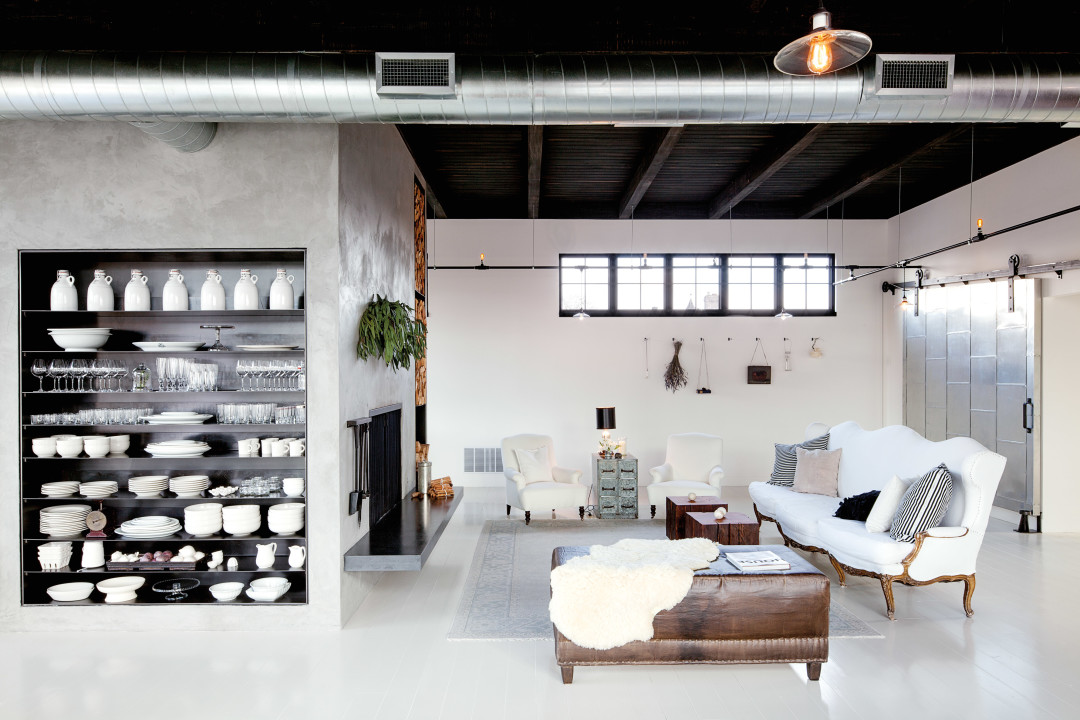
The main living area “feels airy but livable,” says architect Melody Emerick.
Image: Jeremy Bitterman
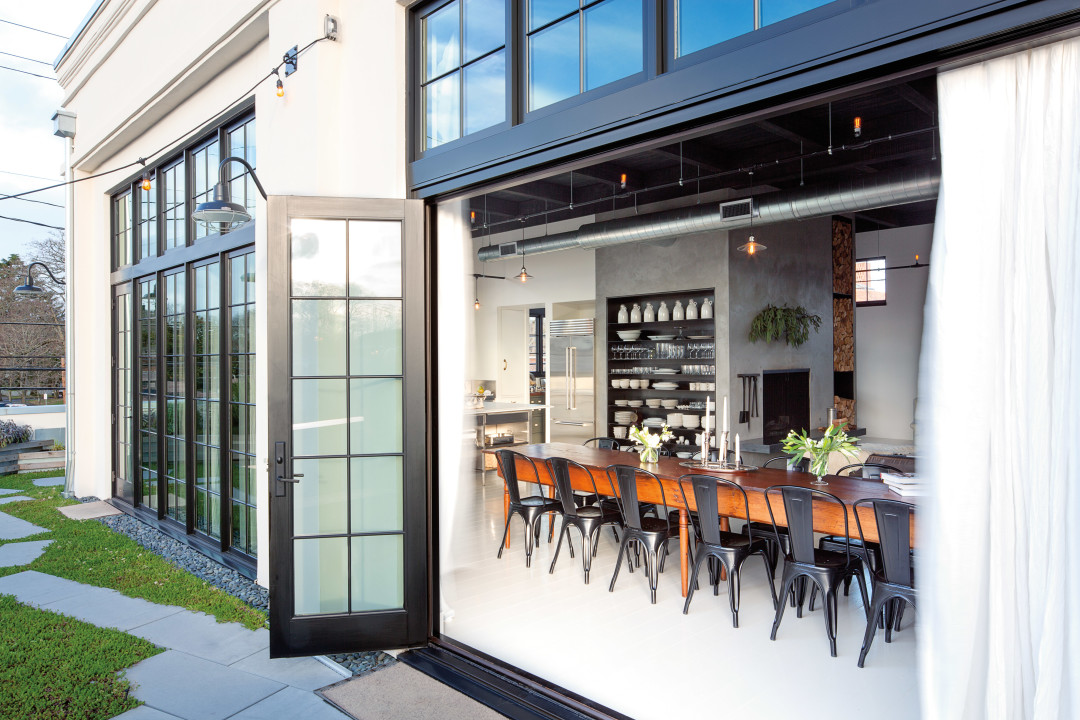
Bifold wood-clad Marvin doors conjure traditional steel door and window systems.
Image: Jeremy Bitterman
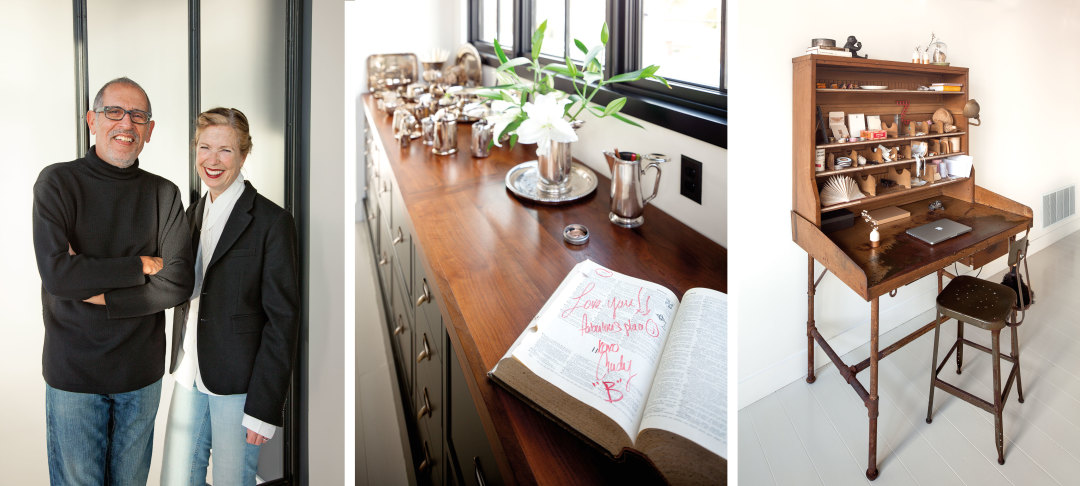
Homeowners Jerry Zaret and Joan Childs; a wall of custom cabinetry mimics library card catalogs while containing clutter; a Lyons chair perches in front of an antique postal desk.
Image: Jeremy Bitterman
To replicate the look of a 1930s warehouse building, the homeowners and architects did their research. The architects even headed to the library, paging through old books to find appropriate similar spaces to mimic. “We had dozens of pictures and books marked with images,” says Zaret. Once they landed on a design, execution presented a new challenge, because over the past century materials and finishes have changed dramatically. To achieve the desired look, their contractor, Right Angle Construction, leveraged local craftspeople to meticulously match the traditional styles, from custom lighting systems to cast-concrete steps to a hand-troweled stucco fireplace.
Soaring factory windows surround the entire second floor, as befits an industrial structure. Wood clad and painted black, the windows appear perfectly period-appropriate but are more environmentally sound and insulating than traditional steel-framed systems. Inside a capacious central space, Doug fir planks soar across the ceiling, decorated with gleaming exposed ductwork and the old clips that fastened tar paper to the original building’s roof. The lighting approximates a sprinkler system the homeowners found in a book about Italian industrial design, with vintage sprinkler heads and pendant lamps from Schoolhouse Electric. There’s even a zinc-clad, counterweighted door separating the main living area from the single bedroom, just like the tinned fire barriers found in old warehouses. Fabricated by local craftsman Brian Creany of FluxDesign, it measures about nine feet square and glides on a custom, gracefully slanted track—and weighs more than 400 pounds.

Light reflects off white walls and floors to make the space glow.
Image: Jeremy Bitterman
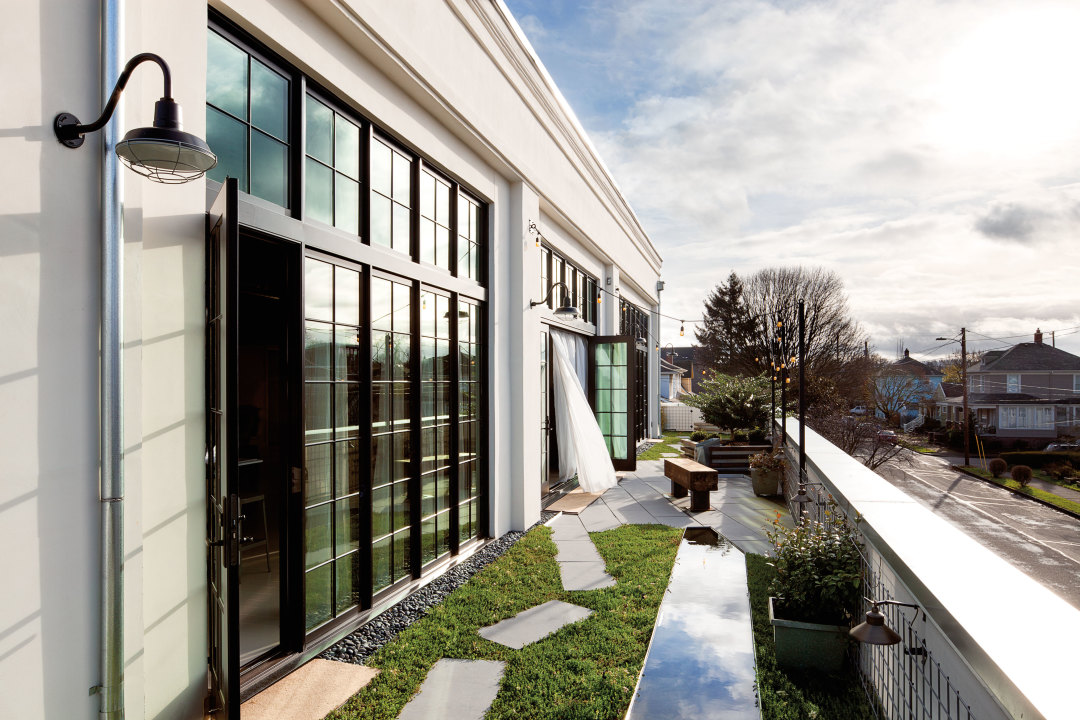
The wraparound deck provides plentiful outdoor space.
Image: Jeremy Bitterman

Hand-painted interior doors; a vintage urinal in the master bath retains its patina of rust; what Childs calls “an ode to Benson bubblers” greets visitors.
Image: Jeremy Bitterman
Despite all these nods to yesteryear, the place also offers contemporary winks. The color palette is edited down to modern hues of grays and creams, both inside and out. Mixed-grain Doug fir plank floors are painted white for a clean, airy feel. Ceramic, all-white growlers from Beam and Anchor decorate open shelving in the kitchen. A wall of windows slides open onto a wraparound deck planted with herbs and jasmine, where a pathway of smooth concrete pavers carves across a fluffy sedum covering and where the steel Tolix dining chairs are often dragged for evening cocktails. The couple also deployed a host of sustainable features, including radiant heating underfoot and a full solar array on the roof. (The homeowners sell electricity back to PGE every month.)
Furniture provides the finishing touch. “We believe it’s important to do the architecture proud in our furnishings,” says Childs. So the couple did the necessary legwork. They found their 14-foot dining table at Grand Marketplace—a harvest table from Aurora, Oregon, dating to the 1800s—in addition to two sprawling vintage costume cabinets that now hold candles, table linens, and dishware. Their bathroom sink—formerly a rusted urinal—came from Rejuvenation. Kenton’s Salvage Works fashioned blocky, rolling coffee tables from an Oregon farmhouse beam. Across the loft, glowing wood and sensuous shapes soften the strong and straight lines—but most everything is vintage, sourced locally, and carefully chosen to match the warehouse aesthetic.
The homeowners, Manhattanites who for years lived in an old factory building in Tribeca, feel right at home in their new digs. “We’ve always loved industrial spaces,” says Zaret. “The openness, authenticity, rawness of it. It feels very easy.” And most of all, it blends effortlessly into an ever-changing neighborhood.
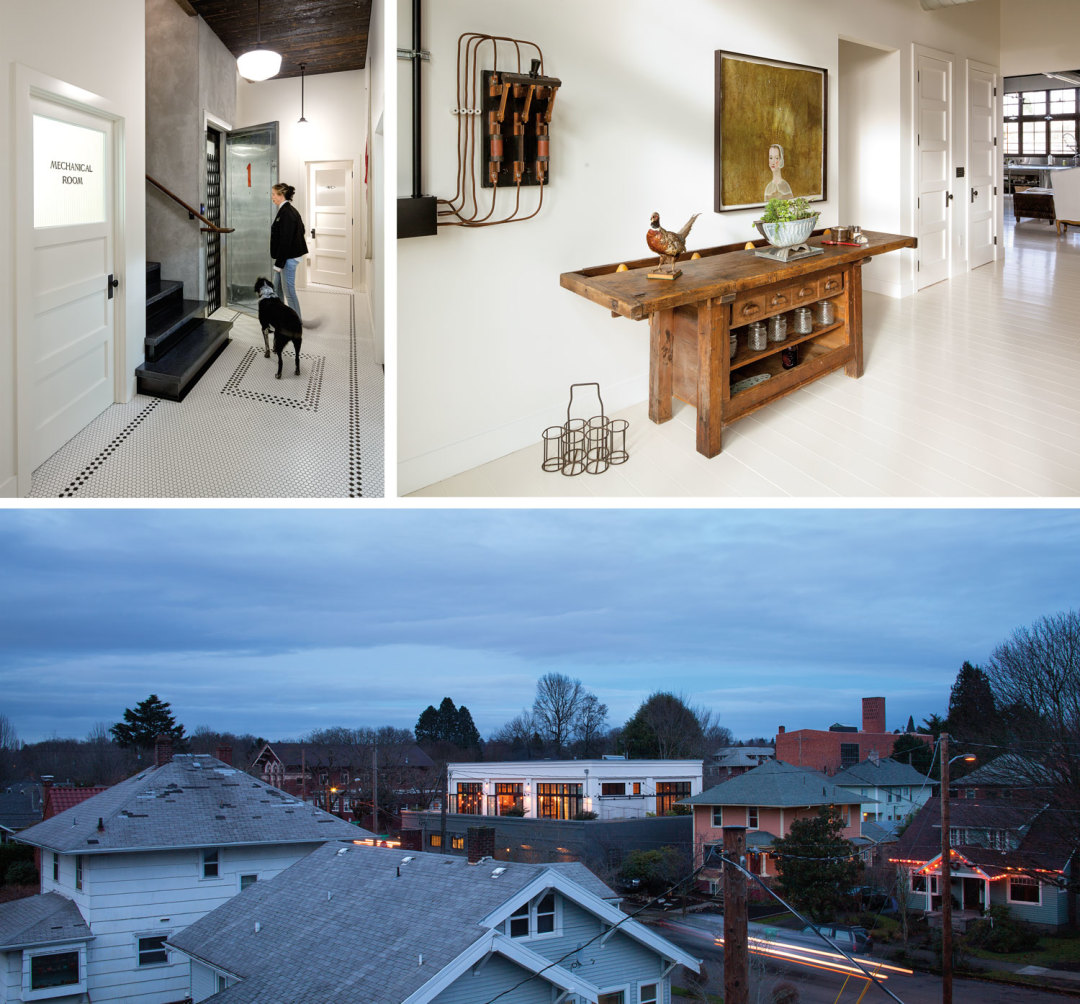
CLOCKWISE FROM TOP LEFT: A compact elevator allows for aging in place; a vintage worktable from Seek the Unique sits beneath a breaker box from the Ford Building; the home blends right into the mixed-use neighborhood.
Image: Jeremy Bitterman
